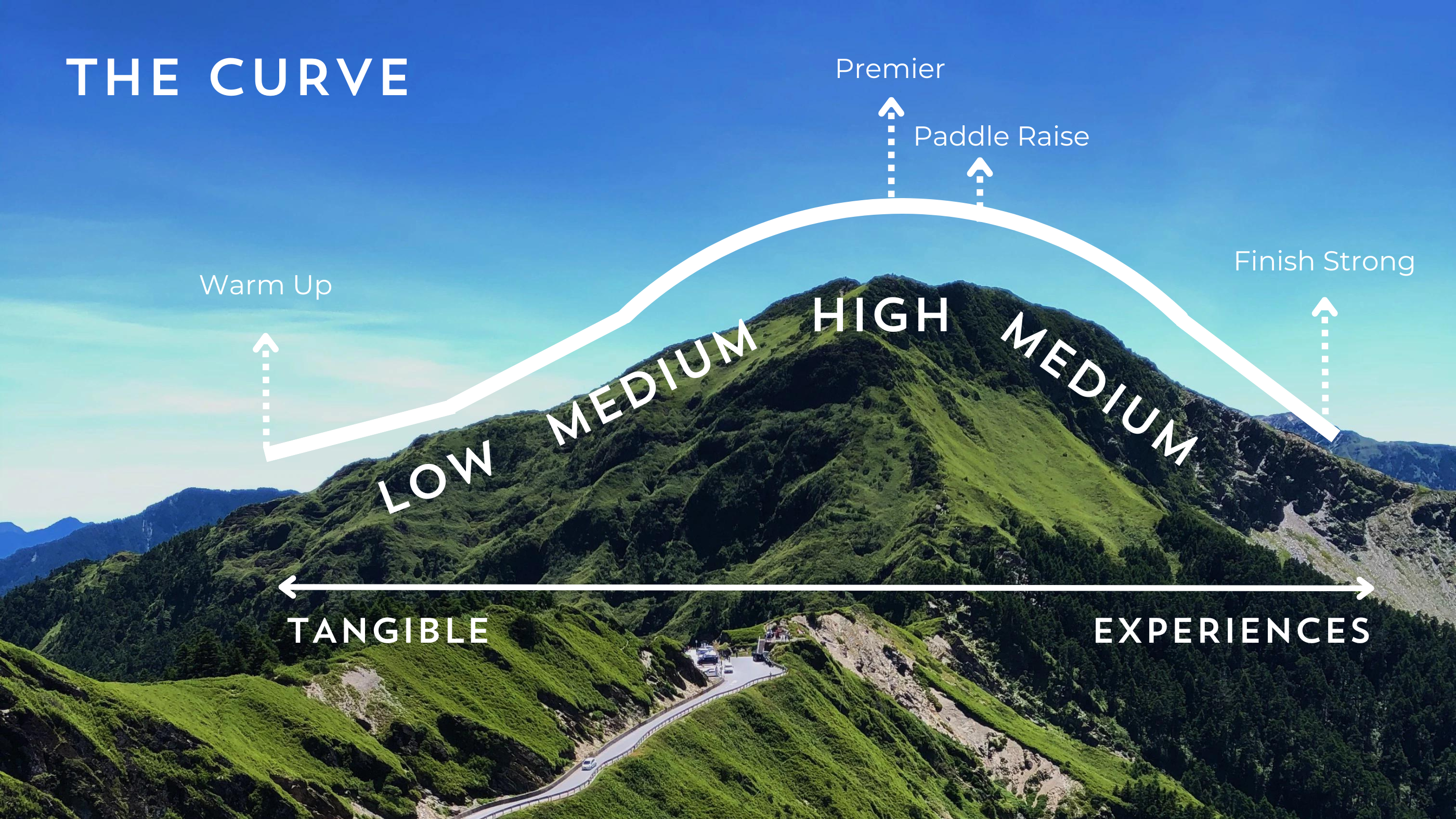Not to sound like an old-timey judge who’s lost control of the courtroom but when it comes to making the most of your live auctions, you only need one thing—Order! Order!
Strategically arranging your auction items can boost bidder engagement, foster a competitive atmosphere, and maximize fundraising for your nonprofit by engaging in both the context of the event and tactful item sequencing.
In this How-to Guide, we delve into the key considerations and best practices necessary to create a successful auction item order that will keep bidders engaged, generate enthusiasm, and help you reach your fundraising goals.

01. Know Your Donors
Before you can optimize the sequencing of your auction items, it’s important to understand the profile and preferences of your donor base. Consider demographics, interests, and potential supporter profiles when determining the sequence. What’s trendy for your donors? What always performs well? What will feel brand new? This key step allows you to tailor the auction item order to suit the audience's tastes and preferences, boosting the chances of increased bidding activity and successful sales.
02. Know Your Items
Collaborating with the consignors of your auction items to gather information about what you intend to offer means more impactful item storytelling during the event. For example, auctioning off a travel package for a Wild Kenya African Safari is sure to garner bids. However, sharing that winning bidders will witness the world-renowned Great Migration firsthand, as millions of wildebeest, zebra, and other herbivores pass through the reserve from July to October every year, paints a picture that will better excite and motivate your donors to act. Sharing more vivid details about an auction item amplifies bidder interest and elevates the final bid price.
03. Know Your Flow
Finally, grouping items based on relevant categories ensures smooth transitions and manageable bidding competition. Avoid monotony by varying the lot categories throughout the auction. A diverse range of items, such as artwork, jewelry, travel experiences, and memorabilia, ensures broader appeal and maintains bidder engagement. Mixing different categories also helps prevent overlapping interests among participants, encouraging broader participation and maximizing bidding opportunities.

This is the Curve--a simple bell curve visualization that explains how to sequence your items for maximum fundraising success. Let's walk through it together!
01. Warm Up with Tangible Items
The opening items of a live auction establish the overall momentum and atmosphere for the event. Begin your auction with a visually striking, captivating item to capture the audience's attention and set a positive tone. This first impression can help generate excitement from the onset. Commonly referred to as "charity warm-ups" or "golden eggs," these items may include high-value collectibles with low starting bids or highly sought-after items for your donor base. These items should be attractive but not the most valuable.
Starting the auction with low to mid-value items gets the crowd responding to the auction atmosphere and quickly comfortable bidding on items. If you’re looking for a more specific starting point, merchandise sells best early in a live auction while experiences sell best later on in the event.
02. Gradually Increase Value and Rarity
As the auction progresses, gradually increase the value and rarity of items. Moving from lower-priced items to high-value pieces and following a logical progression builds anticipation among bidders as they attune to the rhythms of the auction. The goal is to create a sense of momentum, showcasing the most significant and valuable items in the middle to peak bidder interest and motivate competitive bidding.
To inject an element of surprise and unpredictability, include a few "surprise lots" or "wildcard items." These surprise lots can be unexpected, high-value items that are revealed during the auction with no prior promotion, generating excitement and potentially sparking intense bidding wars. These could be unique experiences, limited edition products, or exclusive items that create a sense of urgency and desire among bidders. The suspense and surprise factor can significantly enhance bidder engagement while creating a memorable experience for all attendees.
03. Set the Premier Item Halfway Through
It’s time for that big ticket item you’ve been thinking about all night! With your donors fully in the swing of things, it’s time to offer that premier item with as much fanfare as possible.
A live auction should be crescendo around 50-60% of the way through. Introducing a premier item at this stage can attract new bidders who may not have participated in the auction initially. It also allows bidders to gauge their competition. It can influence their bidding strategy, giving them insight into how much others are willing to spend. This knowledge can shape their future bidding decisions. Strategically, this placement also allows for the premier to be either a high-value tangible item or a high-value experience as it sits at the item type transitionary point of the auction.
04. Hold the Paddle Raise Immediately After the Premier
While your audience is still thinking in big numbers, it’s time to hold the paddle raise!
A paddle raise is a fundraising technique where attendees bid by raising their paddles or cards to indicate the amount they would like to donate or contribute to the cause, making a direct donation without receiving an item in return. Before the paddle raise begins, explain the purpose of the fundraising campaign and the significance of the target amount. Share any compelling stories or statistics that help convey the impact of their contributions. Identify different donation levels, such as $100, $500, or $1,000, and explain the benefits or impact associated with each level.
As the paddle raise gets underway, display the corresponding amounts prominently to encourage participants to donate generously. Keep track of the donation amounts as they are called out by the auctioneer. Display a visual representation of the accumulated funds in real-time to motivate attendees and encourage others to participate.
After the paddle raise ends, express heartfelt appreciation to all participants for their generosity and support. It's also important to extend thanks to the auctioneer and anyone else involved in making the paddle raise a success.
05. Transition into Experiences
With the premier and paddle raise completed, it’s time to make your move into experiences.
These can include thrilling travel experiences, serene spa and relaxation packages, exclusive tours and tastings, and more. Experiences are harder for donors to valuate and personal taste factors largely into their own valuation so donors tend to spend the rest of their available auction budget in the experiences section. Make sure that the item after the premier and paddle raise is your second most valuable item as the bidder who came in second for the premier will likely be looking to bid on the next available big ticket item.
Consider featuring items or packages related to your cause or organization that the auction is supporting. This could include items donated by individuals or businesses tied to the cause or items significant to the nonprofit’s history. These items create a connection between the nonprofit and the donor and increase emotional appeal.
06. Finish Strong!
End the auction with a grand finale item that leaves attendees with a strong lasting impression! This could be a luxurious item, a rare collectible, or a once-in-a-lifetime experience. Ending the auction on a high note ensures that participants leave the event on a positive and memorable note.
Sequencing items in a live auction is an art that combines data-driven decisions with a nuanced understanding of the audience's preferences. By applying the strategies outlined in this guide, auctioneers and event organizers can effectively orchestrate a dynamic and engaging auction, maximizing bidding activity, and achieving favorable outcomes for both sellers and buyers. Mastering the art of sequencing items will undoubtedly enhance the overall experience of live auctions, ensuring they remain a thrilling and unforgettable event.







